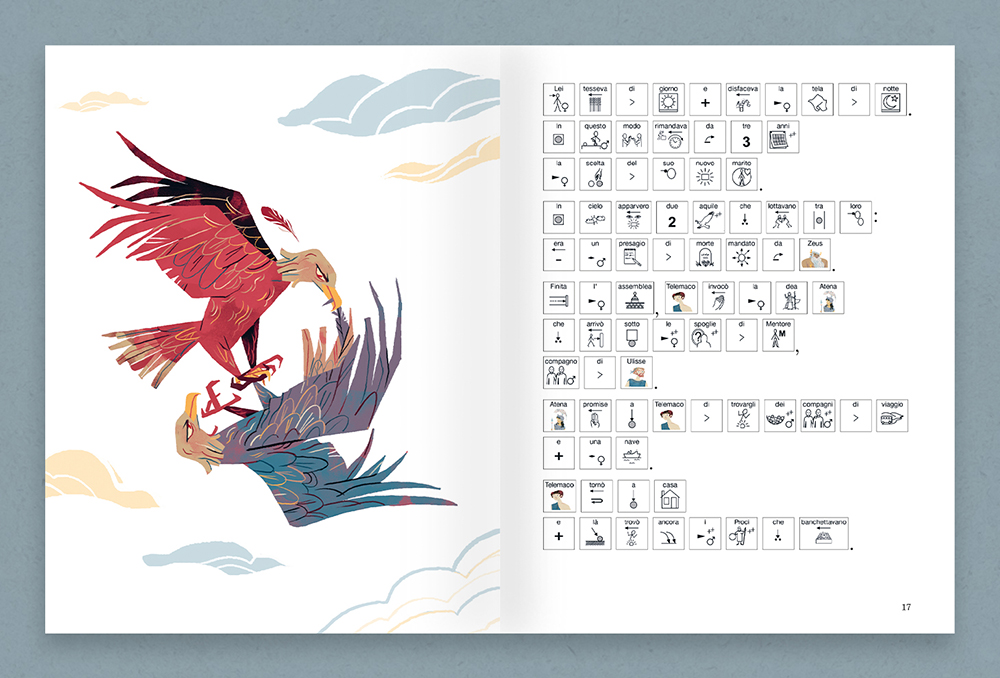 EN
EN
 PT
PT

The Classics with AAC are the inbook versions of Easy Classics by Carlo Scataglini.
Inbooks come from the need to facilitate ways of listening to audio versions of illustrated books. They are aimed mainly at children and youths with communication problems but can be used, starting with the «Born to read» experiences, by all children.
Particular attention is given to the narrative quality: the words and the emotions that are stirred within us with the narration help us not only put ourselves in others’ shoes but they are also an essential step in the creation of thoughts and, over time, of narratives too, thus strengthening relationships and learning. When such a pleasurable and important experience is lacking or is limited, we lose precious sustenance for our hearts and minds.

Moving from inbook versions of illustrated books for nursery-aged children to inbook versions of books for older children or even of the classics is not an easy feat. The risk of falling into the trap of trivialising or simplifying too much to the detriment of the original narrative strength is high.
The Easy Classics by Carlo Scataglini are an important bridge. They are linear but they maintain integrity and energy; they are simple yet rich at the same time. This mediation guarantees both easy reading and the opportunity of translation into faithful symbols and a rich vocabulary which renders inbooks capable of thrilling youngsters of all ages.
WHAT IS AUGMENTATIVE AND ALTERNATIVE COMMUNICATION?
Augmentative and Alternative Communication (AAC) is «an area of clinical practice which aims to compensate temporary and permanent disabilities of people with complex communicative needs» (ASHA, 2005).
The adjective «Augmentative» is not meant to suggest a substitution for natural communication but a way of augmenting it by using all the individual’s competences, including vocalisations or existing verbal language, gestures, signs and communication with aids and advanced technology.
These books are inbooks
It is a book translated into symbols, which comes from the need to facilitate ways of listening to audio versions of illustrated books for children and youths.
The inbook model is edited by Centro Studi Inbook csinbook.eu, which ensures consistency and its development.
It has the following characteristics:

In this way the symbol is associated to the word that is read aloud and those listening can follow the text more easily.